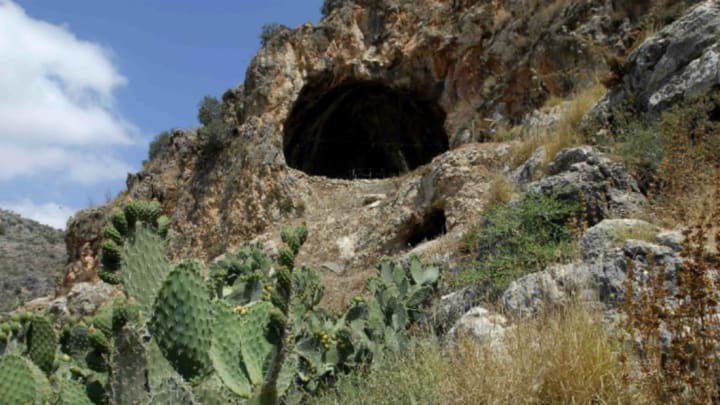If you’re one of those cheerful people who like to plan their own funerals, start taking notes, because this one was legendary. Based on the artifacts found in a cave tomb, researchers have reconstructed the funeral rites—including extravagant feasting and elaborate rituals—for an apparently important woman who died 12,000 years ago. They published their findings in the journal Current Anthropology.
More than 8000 years before the construction of Stonehenge, the Natufian people occupied the Levant region of the eastern Mediterranean. These nomads made their homes in the woods, in the mountains, and underground, using crude tools to hunt, fish, and gather wild grains. In a wild and unpredictable world, these people created communities and worked hard to keep them together.
To do so, researchers say, the Natufians tapped into one of the most unifying of human experiences: ritual. And we now have a view of some of those rituals, thanks to the well-preserved grave of an elderly Natufian woman. The Hilazon Tachtit burial site, hidden under millennia of goat dung, soil, and other graves, was first uncovered in 2008 in the western Galilee region of modern-day Israel. At the time, Hebrew University archaeologist Leore Grosman knew she had found something special; the woman’s body was carefully positioned in her final resting place and blanketed with precious objects like seashells, an eagle’s wing, and the pelvis of a leopard. This woman had been somebody.
The woman’s remains revealed that she had been petite, old—especially for her time—and that she had likely walked with a limp. Given the proclivity of early humans to associate disability with magical powers, the researchers say it’s likely this woman was revered as a shaman.

Grosman and her colleagues were curious to unpack the circumstances that led to this beloved woman’s burial in a pit full of animal parts. By examining field notes, the cave’s geology and architecture, digitized maps, and the frequency and distribution of recovered artifacts, they were able to mentally reconstruct the burial process.

The funeral was a complicated affair with at least six steps: digging the oval-shaped hole; covering it with a layer of seashells, chalk, tortoise shells, and stone; covering that with a layer of ashes and sediment; laying the woman to rest, surrounded by rare items and the broken shells of 86 tortoises; filling in the grave and covering her body with stones; then sealing the grave with a huge stone.
Accomplishing all this today would be time-consuming, but just imagine how much work and planning would have been required from the Natufians, with their simple tools. In addition to digging the grave and collecting the materials, they also had to prepare a funeral feast that included gazelles (both fawns and adults) and likely those 86 tortoises. The inclusion of the gazelle fawns indicates the funeral took place in the spring.
For all their primitive trappings, the late shaman’s people showed some surprisingly sophisticated mental work, Grosman said in a press statement. "The significant pre-planning implies that there was a defined 'to do' list, and a working plan of ritual actions and their order."
The age of the grave is important as well. "The remnants of a ritual event … provide a rare opportunity to reconstruct the dynamics of ritual performance at a time when funerary ritual was becoming an increasingly important social mediator at a crucial juncture deep in human history," the researchers write.
Excavation images courtesy of Natali Hilger
Know of something you think we should cover? Email us at tips@mentalfloss.com.
